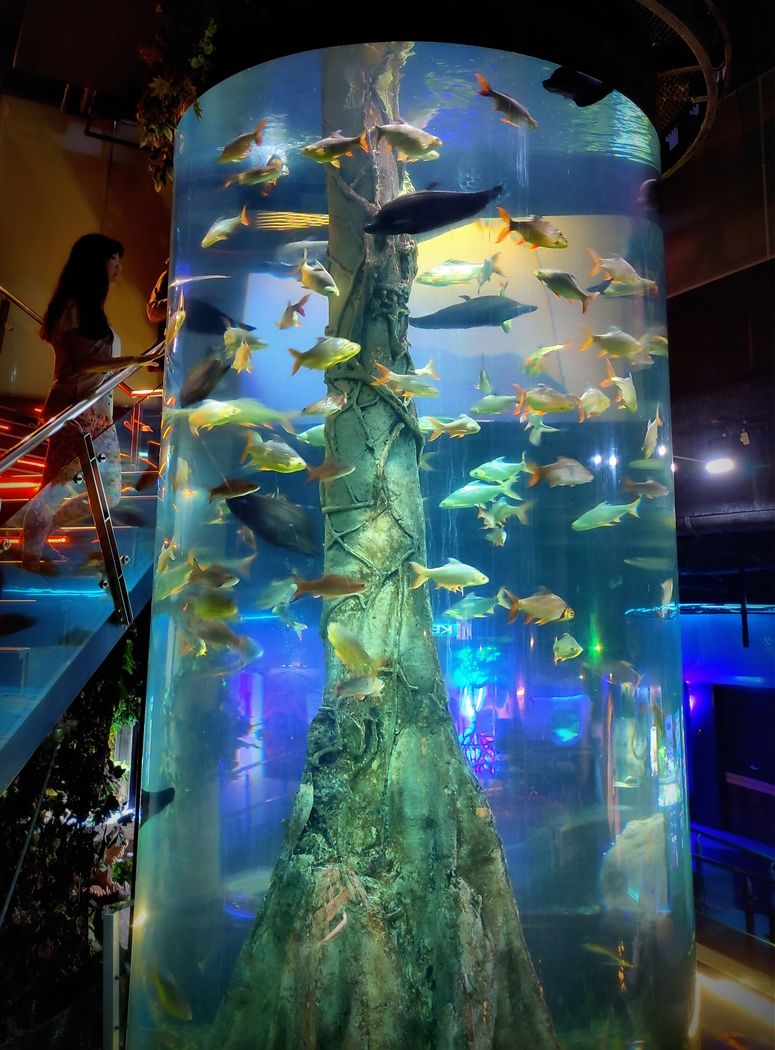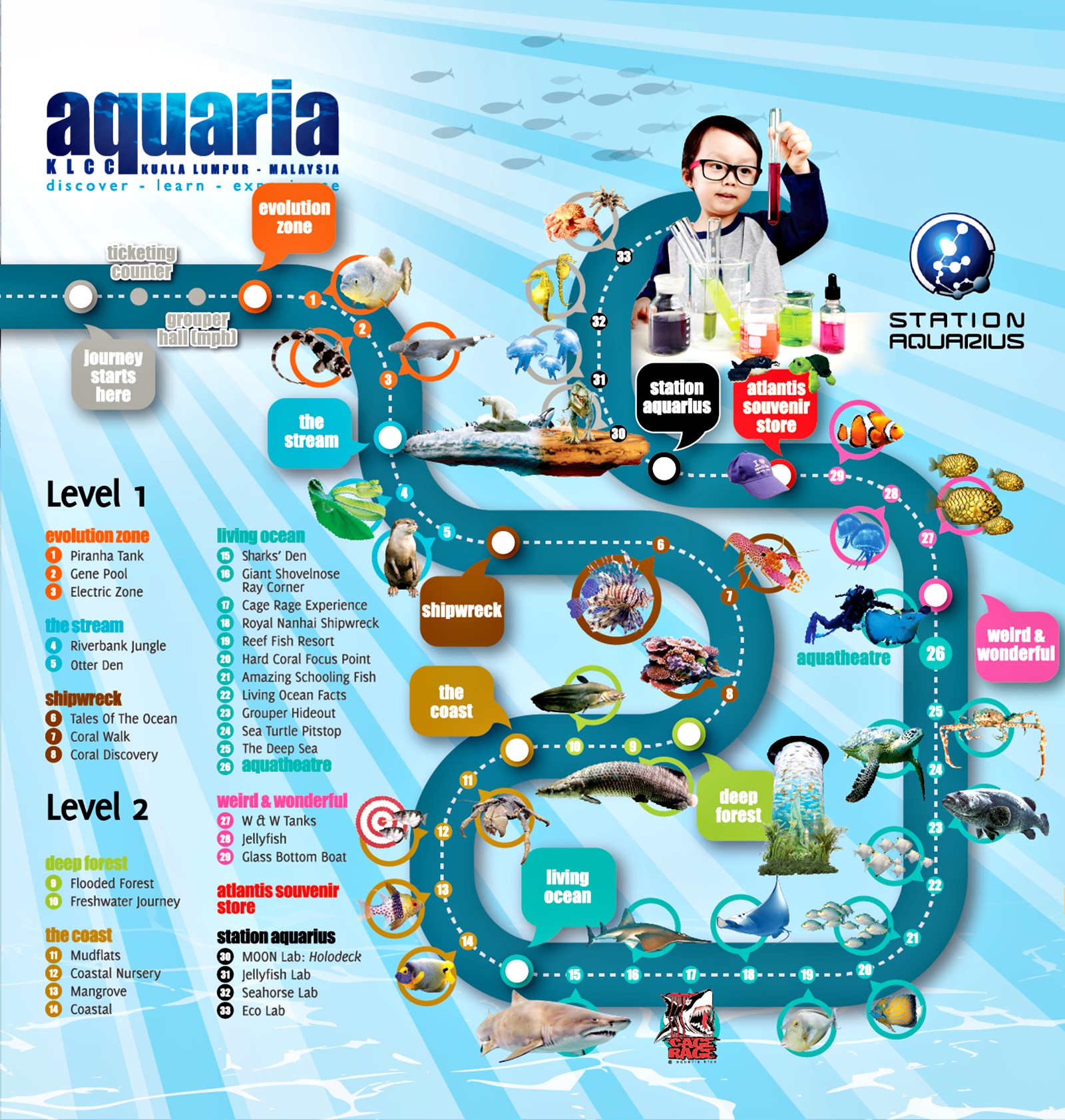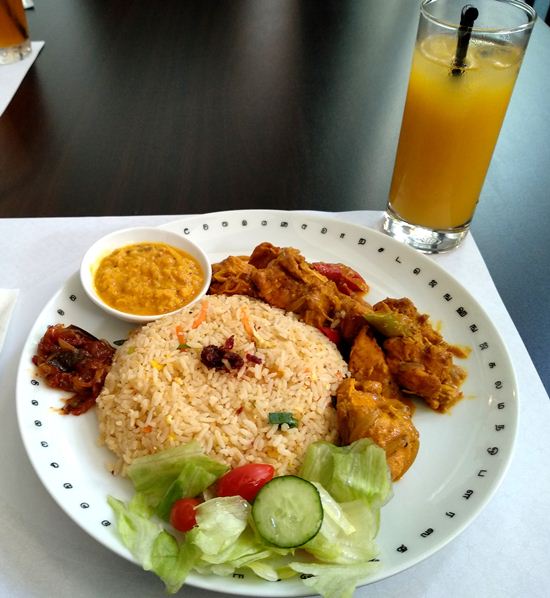
It’s in the top 10 things to do in Kuala Lumpur, so chances are that residents and tourists alike have considered a visit to Aquaria KLCC. This subterranean oceanarium spans over 5,000 square metres over two levels beneath the Kuala Lumpur Convention Centre. Aquaria is more than just fish, as amphibious and land-based creatures are included in the 250 different species that live here.
In this post, I will go into detail about what is in each of the zones and what you can expect to see. I will give you my opinion on which exhibits are interesting, and what happened during the feedings that I watched. If you’re keen to go into Aquaria completely fresh, be aware that this post is full of spoilers. My other post Everything You Need To Know Before Visiting Aquaria has lots of useful information not related to the exhibits that are worth knowing. If you want to know the cheapest place to buy tickets, how long it takes to visit and the state of the toilets, read that post in addition to this one so you will be fully informed.
Evolution Zone
Feeding Times:
10:45am – Gene Pool
4pm – Piranha Tank
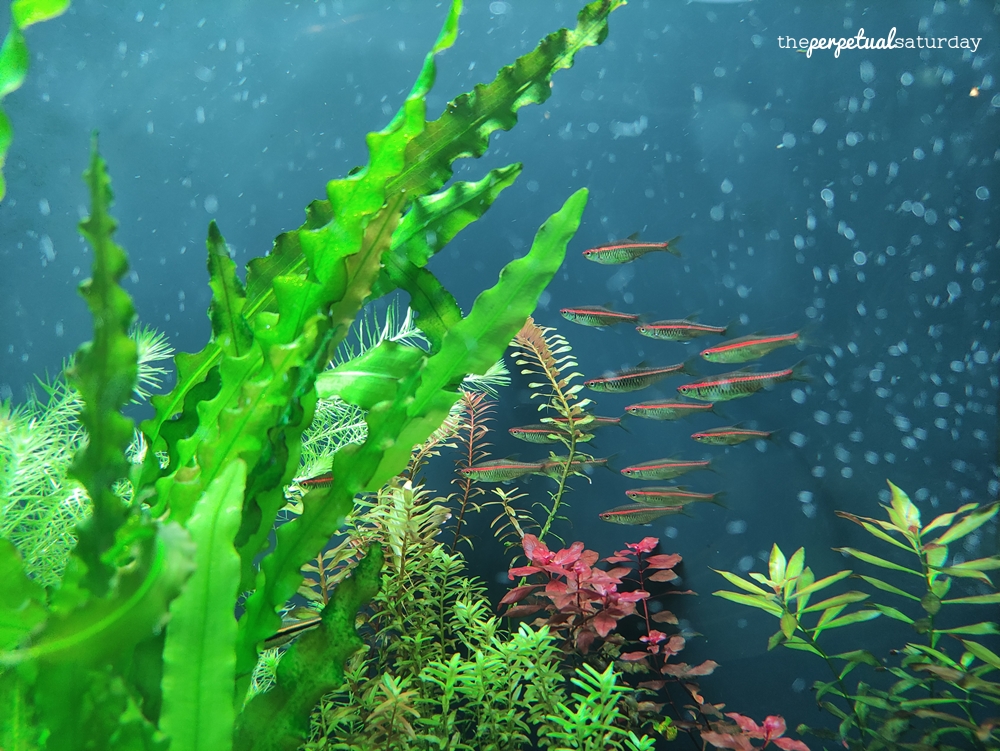
After enduring what was likely too much queuing, the Evolution Zone is a good introduction to Aquaria. This exhibit mixes rather common fish with more interesting species that even children will recognise.

The first attraction that you’ll see is the Piranha Tank. There is a short feeding every day at 4pm that is so savage it almost seems inappropriate for children. A whole fish (already dead, thankfully) is lowered into the tank by a hook, and the piranha tear it shreds within minutes.

The Gene Pool nearby has starfishes and small stingrays. There are a few Nemos (clownfishes, that is) hiding among them, but the Dorys are total impostors. The blue fishes with yellow tails are meant to emulate a Blue Tang, but they’re actually Yellowtail Blue Damsels, which lack the Dory-like black pattern on the upper body. The rest of the fish in the wall tanks are smaller fish that you might find in a home aquarium.
The Stream
Feeding Times:
11am – Electric Eel Tank (Mon, Wed & Sat only)
11:15am & 4:30pm – Otter Den

The start of this zone is marked by a big glass window looking into a chameleon den. Although there is no listed feeding time, we witnessed the chameleon be watered and fed at around 3:20pm on this day. The timing is likely random and based on when the creature needs it, so maybe you’ll get lucky when passing by. Along the same wall, the tanks shift to creepier, crawlier subjects in the form of amphibians, arachnids and insects.
The highlight of The Stream is the Otter Den, a long habitat with pools and even a waterslide. Although it was very sad to see the otters desperately scratching at the metal door in what looked like an attempt to escape, it became clear that a prison break was not their intent when feeding time came around. Once the door opened, the otters did not dart out and have to be corralled back into the pen, but rather, they hopped around the legs of the handlers that came in like excited puppies. They seemed to simply miss them and wanted to play. Heartwarming! Of all the feedings, you should definitely not miss the otter feeding. The handlers do more than just throw them food, but also play ball games with them and get the otters to do basic tricks.
Undersea Shipwrecks
Feeding Times: No feedings in this exhibit

The Shipwrecks exhibit looks like you’re in the hull of a boat and is home to aquatic life that live in the ocean’s deeper depths. Often, the tanks will have broken china and pottery as décor to greater evoke this feeling. Wriggling eels and more unusual looking fish can be found here. After turning the corner, there is a narrow blue corridor, the “Coral Walk.” On one side are information screens about coral reefs around Malaysia, while the opposite side has one long tank with all different varieties of coral, glowing under black light.

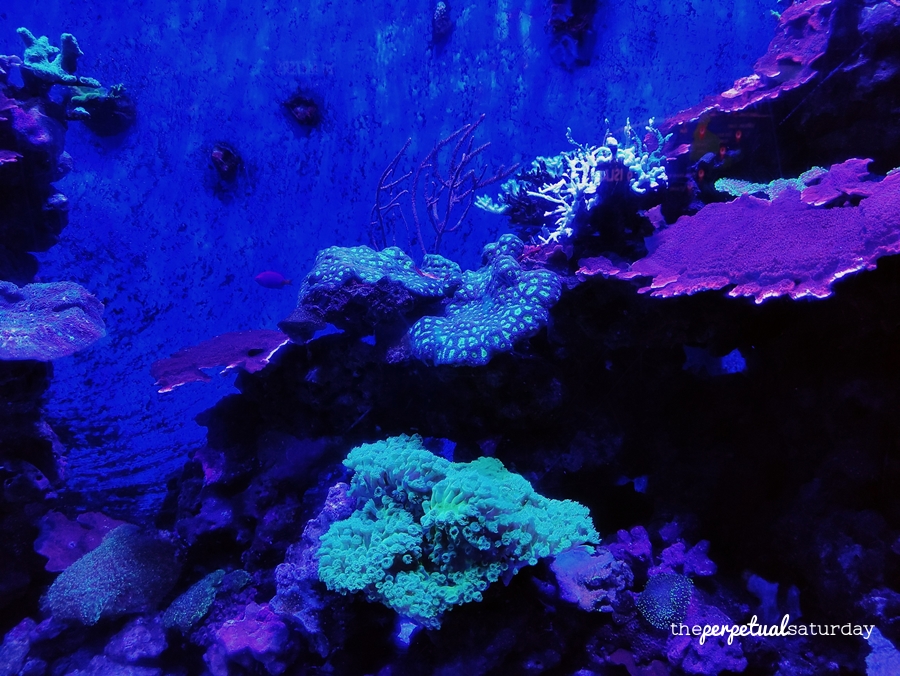
Deep Forest
Feeding Times:
2:30pm – Arapaima Tank (Mon, Wed & Sat only)
5:30pm – Flood Forest Tube & surrounding tanks
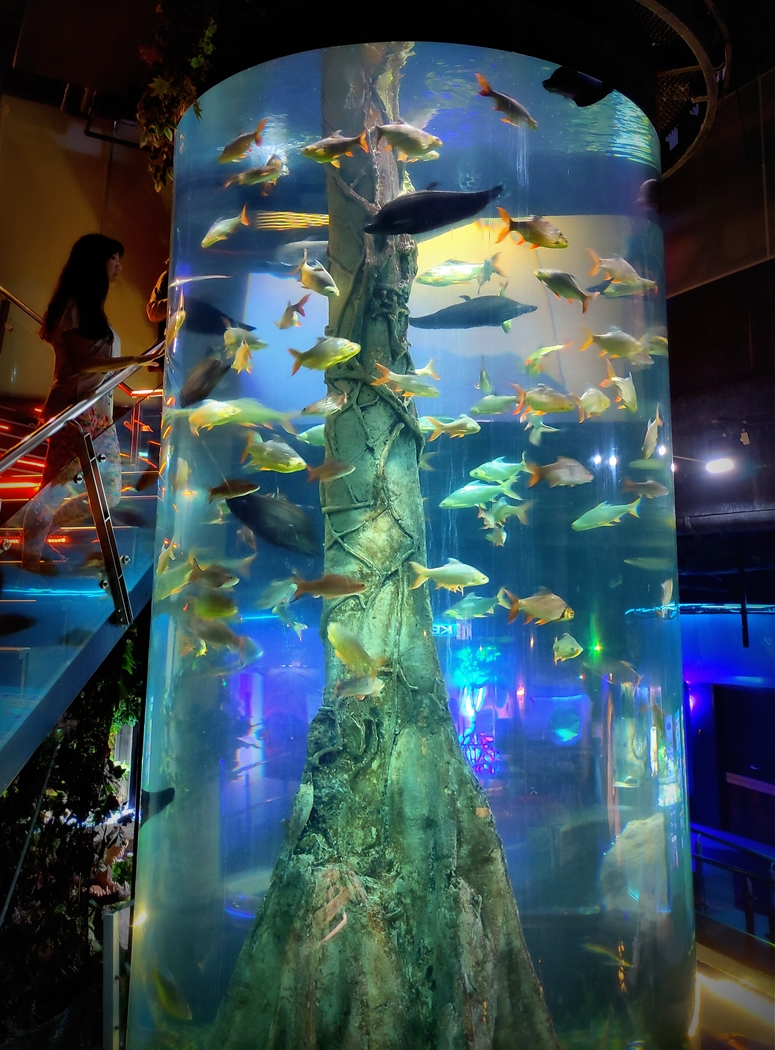
Stairs lead down and hug a cylindrical tube full of fish as you descend to level 2. There is an elevator down a hallway at the top of the stairs to the left if you need it. While on the stairs, you can get a top-down view of the giant stingray in the fish tank below. At the bottom of the stairs, there is a tank that houses an assortment of large fish almost a metre long. This is where the thrice a week Arapaima feeding occurs. There are only four tanks in the Deep Forest section: the aforementioned Arapaima tank, the tube, and two tanks at the base of the tube. The rest of the space along the walls are taken up by information boards, mostly about depressing topics like overfishing and ocean dumping.
The Flood Forest feeding at 5:30pm lasts quite long, so be prepared to stand around for almost thirty minutes if you want to watch the whole thing. The cylindrical tank feeding was very underwhelming. The only thing we witnessed was the fishes suddenly swimming to the top of the tank (presumably to get food) but even while standing on the stairs to get a closer look, I didn’t see any food drop.

The feeding of the red-eyed fish and giant stingray in the tank below the stairs, however, was really interesting. First, the handler stood on the stairs and threw handfuls of fish chunks into the tank. Then she walked around to the opposite side to stand level with the tank and dropped in pieces one by one. If you stand in this area close to the handler, there is a possibility of getting splashed when the fish fight over a piece of food!
She also had this long pole with a pincer end, and when she attached a larger strip of fish to it, I knew that the stingray was on its way. The stingray feeding is neat for children and adults alike to witness. I can say that the highlight of my visit to Aquaria was the giant stingray swimming up against the glass and having a piece of fish manoeuvred into its mouth. The stingray is actually quite clumsy, and sometimes the food would slip out of its mouth and would need to chase it and suck it back in again. I got to see the underside of a stingray, and I was surprised to see the silly little “face” it has under there. While all of this was happening, a second handler was feeding the shark in the next tank over. I didn’t pay any attention to this as I was too engrossed in the stingray, but you should take a moment to check out the other tank during this feeding time.
The Coast
Feeding Times:
5:45pm – Coastal Pool

The Coast section is similarly tiny. The only thing to see is the “Mudflats” tank and the open-topped pool of colourful fish and coral. The Mudflats exhibit might seem dull as it is such a large tank with only two mudskippers (that I saw) in it. The mudskippers will likely be hiding in the murky water too. If you can spot one out of the water, it’s funny and cute the way they “skip” and the slow blink of their amphibious eyes. Maybe it’s just me with a soft spot for mudskippers.

Around the corner is the coastal pool where the daily feeding takes place. In this long, shallow pool is a variety of small, tropical-looking fish. The feeding here will overlap with the feeding in the adjacent exhibit, so you will need to leave the Deep Forest feeding early to watch this one. The handler alternated between throwing fish chunks into the pool, or holding the food and letting the fish eat out of her hand. This feeding is pretty basic so we were the only ones watching it for any significant amount of time on this day. We were able to stand quite close and get a good view of everything.
Photo Spot & Mini Gift Shop
At the bottom of a short ramp after The Coast exhibit, there is a professional Aquaria photo spot set up. Anyone coming down this ramp is cheerfully encouraged by the photographer to pose in front of the watery backdrop for a souvenir photo. It costs nothing to have your photo taken of course, but later you’ll be softly pressured to buy the photo. Whether because of SOPs or predatory salesmanship, the secondary ramp that would allow people to bypass the photographer is cordoned off.
If you’re interested in a keepsake photo, it will be ready and printed once you finish the next section, the Living Ocean. Once you exit the Living Ocean, the gift shop desk will be straight ahead. You can purchase your photo along with any of the small selection of trinkets that are available at this mini gift shop. A much wider selection of souvenirs will be at the main gift shop at the exit.
Living Ocean
Feeding Times:
11:30am – Japanese Spider Crab outside Living Ocean tunnel (Mon, Wed, Fri & Sat only)
12pm & 3pm – General Aquatheatre
12:30pm & 3:30pm – Living Ocean Tunnel
3pm – Sand Tiger Sharks at Aquatheatre (Mon, Wed & Sat only)

The 90-metre transparent tunnel of the Living Ocean is what most visitors will be fascinated by. There is a verrry slow-moving walkway built into the floor so you can get a good long look at everything without having to move. Right next to this is a normal floor where you can hop off the travelator if you want to stand still and watch something.

Swimming above and all around are huge sharks co-existing peacefully with small fish, the rare sea turtle gliding along, and giant shovelnose rays whose goofy smile can be spotted from below.


Shortly, you’ll come to a point where it looks like the exhibit is finished. The travelator curves out of sight and all you can see at the end of the tunnel is a black wall. I was initially disappointed that this part of the attraction was so short, but after turning the corner, the tunnel continued on like normal for a good distance. This second section of the Living Ocean is where the special “Cage Rage” experience takes place. That means that some of the pictures you take in here might have an ugly cage in the background.
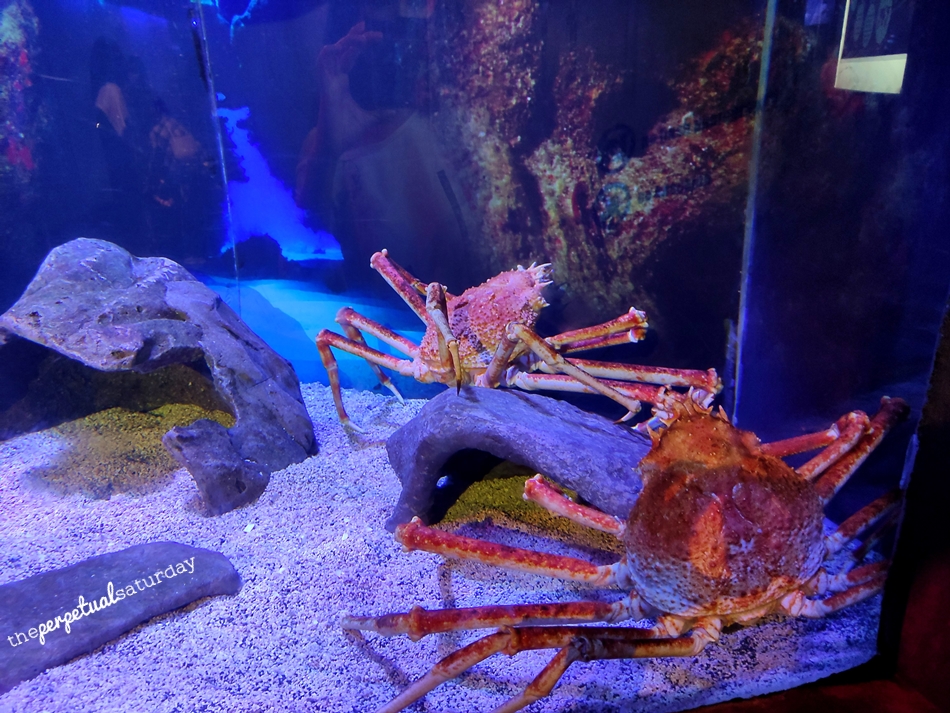
The tunnel properly ends right next to where you entered it. Right now, there is a small gift shop set up in front of the tunnel exit. If you turn left there are a couple of last things to see in the Living Ocean exhibit. On the right side, two enormous Japanese Spider Crabs inhabit a tank that looks far too small for the both of them. These guys get fed four times a week at 11:30am.

Across from the crabs is the Aquatheatre, a large wide window that looks into the Living Ocean habitat from a different angle. It is mostly schools of fish swimming in front of the glass, but we got lucky and had a sea turtle swim by. There are two daily feedings at the Aquatheatre with a focus on the Sand Tiger Sharks on specific days. The website says that there is a general 6:30pm feeding at the Aquatheatre, but we were here at that time and nothing happened. The information that was above the glass did not have the 6:30pm time listed on its schedule either, so getting rid of this last feeding time must be a recent change. There are barely any guests inside Aquaria by 6:30, so it makes sense that they omitted this feeding. No sense in going through all the trouble for zero viewers.
Weird & Wonderful
Feeding Times:
1pm – All creatures

The Weird & Wonderful zone is a beautiful starry corridor illuminated by neon light. Three tube tanks stand in the middle with a variety of bioluminescent fish. The most interesting looking species were the Pinecone Fish with their highly emphasised scales. At this point, you would have seen much cooler fish so the ones in Weird & Wonderful are a little meh.
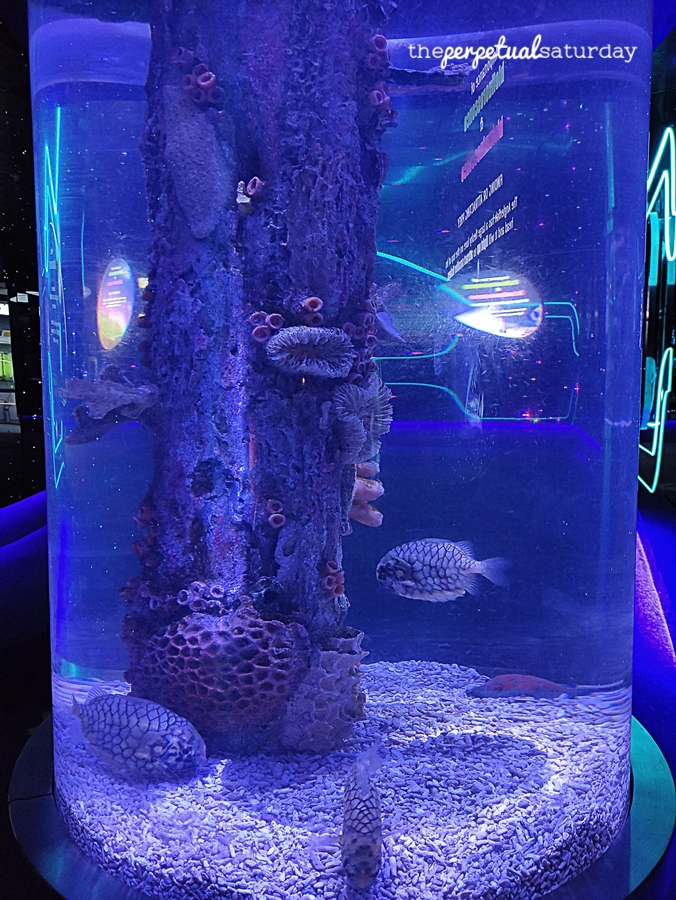
At the end of the room, there is a Giant Pacific Octopus alone in a tank. Unfortunately, it was sleeping in the most inconvenient corner for me to get a decent picture. Since the octopus was hiding from us, we walked through this section within three minutes. Even if all the fish were active, this is undeniably a small section, so the average visitor likely won’t spend much time in here.
Station Aquarius
Feeding Times:
12:15pm & 3:15pm – Jellyfish and Seahorse tanks

While the rest of the Aquaria galleries have cool blue mood lighting, the final exhibit, Station Aquarius, is shockingly bright and sterile-looking in comparison. Only occupying a single room, this laboratory features a number of jellyfish and seahorses. It looks like this was originally intended to be an interactive learning space for kids, but now everything is behind glass and can only be looked at.

The absolute final thing to see before leaving is a display full of carapaces and bones of many of the creatures you saw earlier like crustaceans, arachnids and sharks. The escalator directly behind these displays leads to the Atlantis Souvenir gift shop and the exit.

Once you ascend the escalators, there is no way to come back down, so make sure you are truly finished and don’t want to go back to see anything. The staff will not allow you to re-enter via the Evolution Zone entrance with your ticket if you, for example, just want to catch the piranha feeding. You will need to take the long way and completely backtrack to where you want to go.
Saturday Worthy?
Aquaria KLCC is not a must-see as it’s not any different from the aquariums you’d find in other cities. The exhibits aren’t unique, the tickets are pricey and the venue is much smaller. Tourists to KL can safely skip this attraction to save time or money. For residents with children, a visit to Aquaria is inevitable. You’ll feel guilted into taking them here eventually, so whether it’s worth it is beside the point.
As for child-free adults, this attraction can be a fun thing to do for a special occasion if you approach it in the right way. Even though neither of us is very interested in oceanariums, Mark and I were both hyped for our visit because we had planned it weeks in advance and had time to get excited. We didn’t see it as going to an overpriced aquarium, we treated it as if we were on holiday and celebrating by going to a tourist attraction. We made sure that we were well-fed, well-rested, wore comfortable shoes, and didn’t have anywhere that we needed to be for the rest of the day so that we could fully enjoy our time here. While I would say that you’re not missing anything if you never check this place out, you will have an amusing day here at Aquaria KLCC if you’re in a positive frame of mind and prepared for the crowds and queues.

